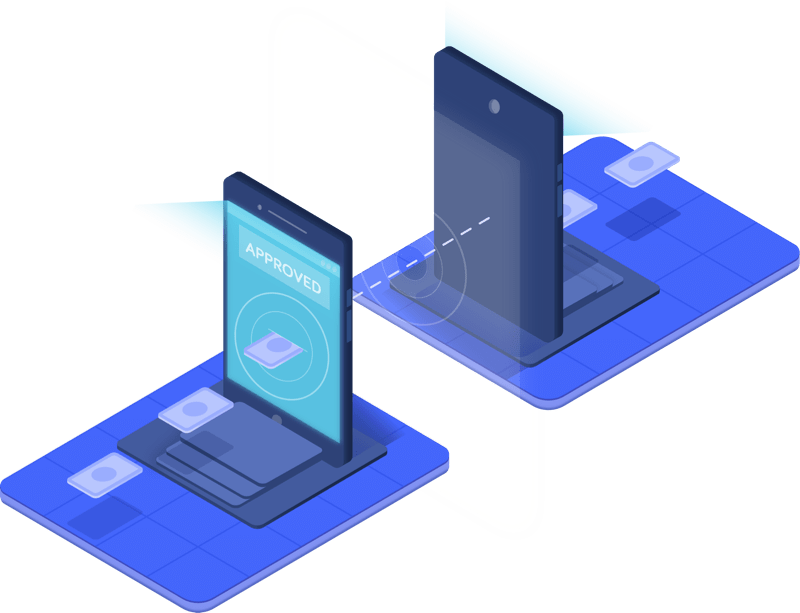We remove the guess work
We remove the guess work
Get Real time data, Insights and Value

IOT

TURN A PRODUCT INTO THE IOT in 6 steps
read more..
- Add sensors: The first step is to add sensors to your product to gather data. These sensors could measure things like temperature, humidity, pressure, motion, or location.
- Connect to the internet: Once you have added sensors, you need to connect your product to the internet. This can be done through Wi-Fi, Bluetooth, or cellular connectivity.
- Develop software: You will need to develop software to process the data gathered by the sensors and transmit it over the internet. You will also need to develop software to control your product remotely.
- Use cloud services: Cloud services can be used to store and process the data gathered by your product. Cloud services can also be used to develop and deploy software updates.
- Security: Security is critical when it comes to IoT devices. You will need to ensure that your product is secure from cyber-attacks and data breaches.
- Integration: Finally, you will need to integrate your product with other IoT devices and platforms to create a connected ecosystem. This could involve integrating with other smart home devices or with industry-specific platforms.
By following these steps, you can turn your product into an IoT device that can gather data, communicate with other devices, and be controlled remotely.

So why wait? Contact us today to learn more about our IoT solutions and how we can help take your products to the next level.
turn your standalone products into connected devices that can provide real-time data, insights, and value to your customers. Whether you’re looking to add basic IoT connectivity to your products or build more advanced IoT applications, we have the expertise and resources to help to ensuring that your products are fully integrated with the IoT ecosystem and can deliver the maximum value to your customers.
Hardware Design for product integration into IoT
The design and realization of prototype hardware equipment (adapter) to create the possibility of connecting each sensor to the cloud. Designing IoT hardware to integrate a product with the Internet of Things (IoT) involves several key steps. Here are the general steps involved in the process:
Read more..
- Designing IoT hardware to integrate a product with the Internet of Things (IoT) involves several key steps. Here are the general steps involved in the process:
- Identify the IoT Use Case: Determine the specific purpose and functionality of the IoT integration. Understand how connecting the product to the IoT will enhance its capabilities, enable data collection, or provide additional value to users.
- Define Requirements: Clearly define the hardware requirements for the IoT integration. Consider factors such as power consumption, connectivity options (e.g., Wi-Fi, Bluetooth, cellular), sensor requirements, processing capabilities, and form factor.
- Select Microcontroller/Processor: Choose a microcontroller or processor that meets the requirements of the IoT integration. Consider factors such as computational power, memory, I/O interfaces, and compatibility with the chosen communication protocols.
- Design Power Management: Develop a power management system that ensures efficient power usage and extends battery life if applicable. Consider power-saving techniques, such as sleep modes and power gating, to optimize energy consumption.
- Integrate Sensors/Actuators: Identify and integrate the necessary sensors and actuators to collect data from the physical world or control the product remotely. Examples include temperature sensors, accelerometers, humidity sensors, or motors.
- Implement Connectivity: Incorporate the appropriate connectivity modules to enable communication between the IoT device and the internet. This may involve integrating Wi-Fi, Bluetooth, cellular, or other wireless communication technologies based on the requirements.
- Ensure Security: Implement security measures to protect the IoT device and the data it generates. This may include encryption, secure communication protocols, authentication mechanisms, and secure storage of sensitive information.
- Design PCB/Layout: Develop the printed circuit board (PCB) layout for the IoT hardware, ensuring proper placement and routing of components to optimize performance, minimize noise, and meet space constraints.
- Prototype and Test: Build a prototype of the IoT hardware and perform thorough testing to verify its functionality, reliability, and performance. Test different scenarios and edge cases to ensure the IoT integration operates as intended.
- Certification and Compliance: If necessary, ensure that the IoT hardware complies with relevant regulations and standards for safety, electromagnetic compatibility (EMC), and wireless communication.
- Manufacturing and Production: Once the design is finalized and validated, proceed with the manufacturing and mass production of the IoT hardware, following established production processes and quality control measures.
- Integration with IoT Platform: Finally, integrate the IoT hardware with an IoT platform or cloud service. This involves setting up the necessary connectivity, data transfer protocols, and authentication mechanisms to enable seamless communication and data management.
It’s worth noting that the actual process and specific steps may vary depending on the complexity of the IoT integration, the product, and the desired functionality.
The Damcast IoT cloud platform, private or public
Design, customization and installation of the Damcast Cloud (ThingsBoard, or other) platform on-premises or in the public cloud. Designing and deploying a cloud IoT platform can be a complex process that involves various steps. Here are the general steps involved in designing and deploying a cloud IoT platform, whether on-premises or in the public cloud
Read more..
Designing and deploying a cloud IoT platform can be a complex process that involves various steps. Here are the general steps involved in designing and deploying a cloud IoT platform, whether on-premises or in the public cloud:
-
Define Requirements: Determine the specific requirements of your IoT platform, considering factors such as scalability, performance, data storage, security, connectivity, and integration with other systems or devices.
-
Choose Deployment Model: Decide whether you want to deploy the IoT platform on-premises or in the public cloud. Consider factors such as cost, infrastructure availability, control, security, and scalability to make an informed decision.
-
Infrastructure Setup: Set up the necessary infrastructure for your IoT platform. This includes provisioning servers, storage, networking components, and any other hardware or virtual resources required for your deployment model.
-
Select IoT Platform Software: Choose the appropriate IoT platform software that aligns with your requirements and deployment model. There are various options available, including open-source platforms like Eclipse IoT, commercial platforms like AWS IoT or Azure IoT, or custom-built solutions.
-
Architectural Design: Design the overall architecture of your IoT platform. Determine how different components will interact, including data ingestion, storage, processing, analytics, and application interfaces. Consider scalability, fault tolerance, and security aspects in your design.
-
Data Ingestion: Set up mechanisms to ingest data from IoT devices into your IoT platform. This may involve configuring protocols like MQTT or CoAP, integrating with APIs, or utilizing gateways or edge devices to collect and transmit data from the physical world.
-
Data Storage and Processing: Design the data storage and processing components of your IoT platform. Determine the appropriate data storage technologies, such as databases or data lakes, to handle the volume and variety of IoT data. Define the data processing workflows and analytics capabilities required to extract insights from the data.
-
Security and Access Control: Implement robust security measures to protect your IoT platform. This includes securing communication channels, implementing authentication and authorization mechanisms, encrypting data at rest and in transit, and monitoring for any security threats or vulnerabilities.
-
Integration and APIs: Define and implement the necessary APIs and integration points to enable seamless integration with other systems, applications, or third-party services. This allows for data exchange, event triggering, or interoperability with external systems.
-
Testing and Quality Assurance: Conduct thorough testing of your IoT platform to ensure its functionality, performance, and reliability. Test different scenarios, load testing, security testing, and edge cases to validate the platform’s behavior and identify any issues or bottlenecks.
-
Deployment and Scalability: Deploy your IoT platform to the chosen deployment model (on-premises or public cloud). Ensure the necessary configurations, dependencies, and connectivity are in place. Implement mechanisms for horizontal or vertical scaling to accommodate growing data volumes or increasing device connections.
-
Monitoring and Maintenance: Set up monitoring and management tools to monitor the health, performance, and security of your IoT platform. Implement proactive maintenance practices, such as regular updates, patches, and backups, to ensure ongoing operation and availability.
-
User Interfaces and Applications: Develop user interfaces or applications to interact with your IoT platform. This may involve building dashboards, visualization tools, or APIs to enable users to monitor and control devices, access data insights, or integrate with other applications.
-
Documentation and Training: Document your IoT platform architecture, configurations, APIs, and operational procedures. Provide training and documentation to users, administrators, or developers who will interact with or contribute to the IoT platform.
-
Continuous Improvement: Continuously monitor and assess your IoT platform’s performance, security, and functionality. Collect feedback from users and stakeholders to identify areas for improvement and implement iterative enhancements to meet evolving requirements.
The specific steps and implementation details may vary depending on the chosen IoT platform software, deployment model, and specific project requirements.
AI Services
There are several AI services that you can add to your IoT cloud platform to enhance its capabilities and derive valuable insights from the data collected by IoT devices. Here are some common AI services that can be integrated into an IoT cloud platform:
Read more..
There are several AI services that you can add to your IoT cloud platform to enhance its capabilities and derive valuable insights from the data collected by IoT devices. Here are some common AI services that can be integrated into an IoT cloud platform:
-
Machine Learning (ML) Services: ML services enable you to build and deploy machine learning models for tasks such as predictive analytics, anomaly detection, classification, and regression. By analyzing IoT data, these models can identify patterns, make predictions, and provide valuable insights.
-
Real-time Stream Processing: Real-time stream processing frameworks like Apache Kafka or Apache Flink can be used to process and analyze data in motion from IoT devices. By applying AI algorithms in real-time, you can perform tasks such as complex event processing, real-time analytics, or decision-making based on the incoming data stream.
-
Natural Language Processing (NLP): NLP services enable you to extract meaning and insights from text data collected by IoT devices. By applying NLP techniques, you can perform sentiment analysis, entity recognition, text classification, or language translation, which can be useful for customer feedback analysis or textual data processing.
-
Computer Vision: Computer vision services allow you to process and analyze image or video data from IoT devices. This can include tasks such as object detection, facial recognition, image classification, or video analytics. Computer vision can be valuable in applications such as surveillance, industrial monitoring, or visual inspection.
-
Recommendation Systems: Recommendation systems use AI algorithms to provide personalized recommendations to users based on their IoT data or behavior. By analyzing user preferences, historical data, and contextual information, recommendation systems can suggest relevant products, services, or actions to enhance user experience.
-
Anomaly Detection: AI-powered anomaly detection can help identify unusual patterns or behaviors in IoT data that may indicate potential faults, anomalies, or security breaches. By leveraging machine learning techniques, you can develop models to detect anomalies and trigger alerts or automated actions for proactive maintenance or security measures.
-
Predictive Maintenance: Predictive maintenance leverages AI techniques to predict when IoT devices or machinery are likely to fail or require maintenance. By analyzing historical data and patterns, predictive models can identify maintenance needs, optimize maintenance schedules, and reduce downtime or unplanned failures.
-
Chatbots and Virtual Assistants: Integrating chatbot or virtual assistant services into your IoT cloud platform enables natural language interaction between users and IoT devices. Users can control devices, ask questions, or receive assistance through voice or text-based interfaces, improving user experience and accessibility.
-
Data Analytics and Visualization: AI-powered data analytics and visualization tools allow you to process and analyze large volumes of IoT data, derive insights, and present them in meaningful visual formats. These tools can help uncover trends, correlations, or patterns in the data collected by IoT devices.
-
Reinforcement Learning: Reinforcement learning techniques enable IoT devices to learn and adapt based on feedback and rewards. This can be particularly useful in scenarios where devices need to optimize their behavior or make decisions in dynamic and changing environments.
These are just a few examples of AI services that can be integrated into an IoT cloud platform. The specific services to choose will depend on your use case, data characteristics, and the insights you want to derive from the IoT data.
ANALYSYS AND RECOMMENDATIONS ON EXISTING SOLUTIONS
The design and realization of prototype hardware equipment (adapter) to create the possibility of connecting each sensor to the cloud (even outside the DamcastCloud platform) with each chosen protocol (defining the security levels as needed). (For the realization of this step, it is necessary that the device for which the adapter will be created to be physically present)
Read more..
- The design and realization of prototype hardware equipment (adapter) to create the possibility of connecting each sensor to the cloud (even outside the DamcastCloud platform) with each chosen protocol (defining the security levels as needed). (For the realization of this step, it is necessary that the device for which the adapter will be created to be physically present)
- analysis of existing equipment and functional requirements
- at the level of electronics (voltages, currents, latencies, etc.)
- at the level of data quantity and speed
- at the communication protocol level (device<->adapter<->cloud)
- at the level of the medium that will be used to carry out the communication
- at the hardware level (open source hardware adaptation or creation of new hardware, mcu, cpu, etc.)
- at the level of the power sources
- at the level of firmware upgrade policies (ota, manually, …)
- at the level of security requirements
- at the level of the needs for a test environment
- documenting the analysis and results
- design and determination of the necessary hardware for the realization of the adapter
- selection of hardware (mcu, cpu, etc.) according to the analysis results
- assembly of hardware elements of the adapter
- realization of the hardware interface with the existing device
- testing the operation of this interface
- updating or creating the test environment
- testing the operation of communication with the chosen protocol and medium
- documenting the analysis and results
- design and programming of software driver for the adapter
- defining the programming language and environment
- determination of libraries and code that can be reused (based on hw and selected protocols)
- driver programming and testing
- creating test code in the cloud and at the program level
- compilation, testing, deployment in the testing environment
- installing the firmware in the adapter
- functionality testing (local)
- connection testing with test-cloud
- communication security testing
- testing OTA if necessary
- documentation
- analysis of existing equipment and functional requirements
Services
What we offer
Hardware Design
Users can integrate a considered number of devices. Benefit from dynamic device management by seamlessly managing remote devices.
IoT Cloud Platform
To increase uptime and efficiency intuitive web-based interface to gain immediate insights on individual assets, always and anywhere
AI Services
Add intelligence to your application to enhance its capabilities and derive valuable insights from the data collected by IoT devices
Studies and Simulations
Design prototype hardware equipment (adapter) connecting each sensor to the cloud (even outside the DamcastCloud platform) with each chosen protocol (defining the security levels as needed)
Start a Project
We are always eager to discuss an active and mutual collaboration with potential partners, for the benefit of our customers.